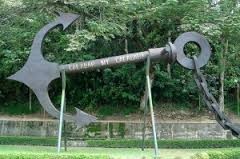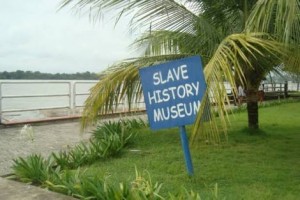Catch Up with History at the National Museum Calabar
09 December 2019

National museum Calabar is a 19th century building set on a hill overlooking the Calabar river. The building was originally designed and built in Britain in 1959 before it was then moved in parts to Nigeria. It used to serve as the residence and administrative office of the British officials during the colonial era. It houses artifacts, documents and several materials from colonial times. Just by the lawn next to the museum is a ship bell dated as far back as 1848.

The ground floor contained materials of slave trade and British colonization. Pictorial representations and illustrations of slave trade, markets, and ships. It tells the story of slave trade in Nigeria considering Calabar was a major port during the colonial era.
The top floor housed precious artifacts such as an organ from 1885, a gramophone and other ancient archaeological materials.
Address: Ekpo Eyo Drive, Duke Town, Calabar
Open: 9am-6pm
Admissions: entry fee costs N100 per head
Tour Tips
- It?s better to go to the museum in groups as the museum is more receptive to groups of people than individuals.
- Entry into the museum is very affordable as service charge is just a N100 per head. Make sure to wear comfortable shoes as you are in for a long walk touring the whole museum.
How to get to National Museum Calabar
- By Air: From any location, board a flight to Margaret Ekpo International Airport Calabar and take a taxi to the national museum. The distance is just about 6km from the airport.
- By Land: when you arrive at Calabar, take a bus to duke town. Then take a taxi to Ekpo Eyo drive where the national museum is located.
Things to do at the National Museum
- Learn about slave history from the museum artifacts and materials.
Get a clearer picture of slavery with pictures, maps, and illustrations with knowledgeable tour guides to narrate accounts of slaves as well as answer questions to satisfy your curiosity. Cameras are not allowed at the museum so you won?t be allowed to take any photographs.
- Behold the old instruments of torture carrying the blood, tears, and sweats of past slaves.

A good look at various torture relics that were used on slaves who disobeyed orders. Here, you get a feeling of the anguish and pain of our forefathers suffered at the hands of the colonial masters.
- Get a view of the Calabar river from the top of the museum.

The Calabar museum sits atop a hill overlooking the museum, the waterfront is a nice view for sightseeing and relaxation
Leave a comment
Leave a comment
Share